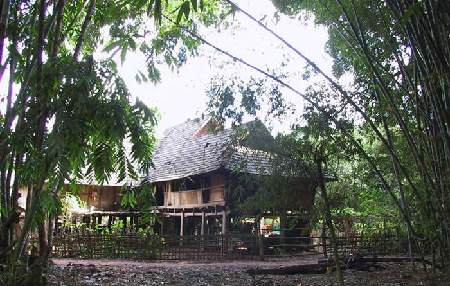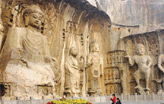Chinese Way
Chinese bamboo culture
Updated: 2011-03-24 13:59
(chinaculture.org)
Bamboo and Characters
Bamboo formed the earliest ties with Chinese characters, which can be traced back to the New Stone Age 6,000 years ago. The pictographic symbol for "bamboo" was found on the pottery unearthed in the Yangshao cultural relics of Banpo Village, Xi'an in 1954, and the symbol was also discovered in oracle bone inscriptions and inscriptions on ancient bronze objects. Between the Warring States Period (475-221 BC) to the Jin Dynasty (265-420 AD), the people wrote on "bamboo slips". Many of the earliest Chinese historical documents, such as the Book of Story and The Book of Rites and Analects of Confucius, were recorded on such material,making great contributions to the development of Chinese culture.

Bamboo and Science and Technology
The application of bamboo in science and technology is really thrilling. The Chinese invented a bamboo drill dating back to the Shang Dynasty (1600-1100 BC). In 251 BC Li Bing, Sichuan prefecture, led the local people in building the Dujiang Weirs, the first irrigation network in the world, in which bamboo played an important role. The world's oldest water pipe was also made from bamboo. During the Han Dynasty (206 BC-220 AD) the Sichuan people successfully sank a 1,600-meter-deep well with thick bamboo ropes. This technology did not spread to Europe until the 19th century, and in 1859 the Americans drilled the first oil well in Pennsylvania by using the technology.
Paper making is one of China's four ancient great inventions. In the Han Dynasty, people began to use bamboo to make paper, which was of excellent quality and reasonable price. Even now it is used as one of the important raw materials in paper making. Some of the xuan paper for traditional Chinese painting is also made from tender bamboo. The ancient Chinese people used bamboo chips for calculation before the invention of the abacus.
With the invention of gunpowder, the people wished to go into space. In the Yuan Dynasty (1279-1368) a man tied a big bamboo tube on each of the four legs of a chair and filled them with gunpowder. He wanted to send the person on the chair to space by reactive force after lighting the gunpowder. Although it seems somewhat absurd, no one can deny its value as the embryonic form of the earliest "manned rocket."

Bamboo and Architecture
Bamboo has been used in architectural art since long ago. During the Han Dynasty skilful craftsmen built a magnificent palace for Emperor Hanwudi with bamboo. In southern China where bamboo is abundant, bamboo stilt houses are common residences for the people. Today, some minorities in Southwest China, like the Dai people in Yunnan, still live in the two-storied bamboo stilt houses — the upper floor of the house contains bedrooms, kitchens and balconies, and the ground floor is used to house poultry and domestic animals. The bamboo houses set off by green plantain trees makes for a lovely picture.
As it is light and tough with elasticity and bearing capacity, bamboo is an ideal building material, which can be used to construct houses, scaffolding and pillars. Enlightened by the Painting of Orchids and Bamboo, a masterpiece of the great Qing-dynasty painter and calligrapher Zheng Banqiao, Bei Luming,the world-famous architecture-design master, designed a 315-meter, 70-story mansion for China Bank. This magnificent building still stands lofty and firm in Hong Kong despite the horrible typhoons.
Specials

Tea-ing up
More turning to Chinese tea for investment opportunities like vintage wine

A cut above
The ancient city of Luoyang is home to a treasure trove of cultural wonders.

Rise and shine
The Chinese solar energy industry is heating up following recent setbacks in the nuclear sector